by Eric Meier
There’s just something within human nature that loves to see things ordered and ranked: we want a champion. One might watch a basketball game, where the two teams battle back and forth in lock-step into double overtime, only to have the winning team go ahead by a single basket at the buzzer. Did this necessarily determine who the better team truly was? Maybe, maybe not; but we need finality, we need separation, we need a champion.
With this intrinsic urge in mind, I’ve compiled a top ten list of the heaviest woods in the world. Keep in mind that wood density can vary by an average of plus or minus 10% between samples (called the coefficient of variation), so it’s entirely possible that a sample of the tenth-ranked wood on this list could easily weigh more than a sample of the first ranked wood on this list. Some of these species weigh, on average, only a few tenths of a pound more per cubic foot than their nearest rivals: certainly no conclusive ranking should be inferred from the list. But nonetheless, we want someone to take home the gold medal—we need a champion crowned—so here are the top ten heaviest woods in the world:
|
|
||
 |
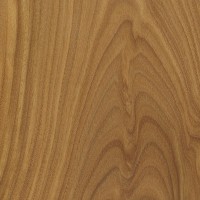 |
Verawood(Bulnesia arborea) 74.4 lbs/ft3 (1,192 kg/m3)Sometimes called Argentine Lignum Vitae, this wood is a gem: inexpensive, great olive-green color, beautiful feathery grain pattern, and it takes a great natural polish on the lathe. |
|
|
||
 |
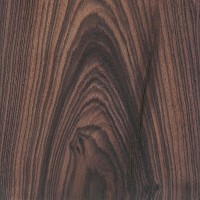 |
Kingwood(Dalbergia cearensis) 74.9 lbs/ft3 (1,200 kg/m3)Kingwood supposedly got its name from several French kings (Louis XIV and Louis XV) that preferred the wood in the use of fine furniture. |
|
|
||
 |
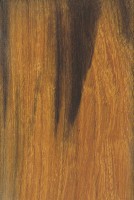 |
Desert Ironwood(Olneya tesota) 75.4 lbs/ft3 (1,208 kg/m3)This wood is a hobbyist favorite. Too small to be a viable timber tree, this wood’s colorful grain and high density are restricted to small specialty projects. |
|
|
||
 |
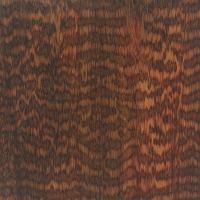 |
Snakewood(Brosimum guianense) 75.7 lbs/ft3 (1,212 kg/m3)It’s easy to see what makes Snakewood so unique–its patterns and markings resemble the skin of a snake. Limited supply and high demand make this one of the most expensive woods on earth! |
|
|
||
 |
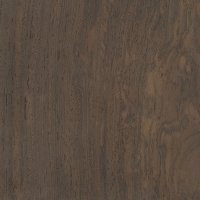 |
Leadwood(Combretum imberbe) 75.8 lbs/ft3 (1,215 kg/m3)Another exceptionally hard African wood, the name says it all. Leadwood is seldom seen for sale, and is reported to be protected in South Africa–a very elusive timber. |
|
|
||
 |
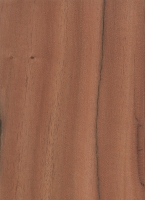 |
Quebracho(Schinopsis spp.) 77.1 lbs/ft3 (1,235 kg/m3)From the Spanish “quebrar hacha,” which literally means “axe breaker.” Aptly named, wood in the Schinopsis genus is among the heaviest and hardest in the world. |
|
|
||
 |
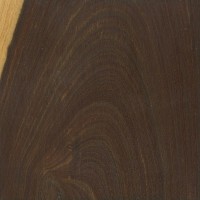 |
Lignum Vitae(Guaiacum officinale) 78.5 lbs/ft3 (1,257 kg/m3)Widely accepted as the heaviest wood in the world–this wood has been listed as an endangered species and is listed in CITES. Consider Verawood as a very close substitute. |
|
|
||
 |
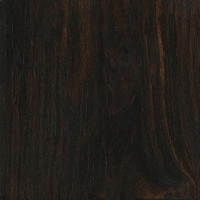 |
African Blackwood(Dalbergia melanoxylon) 79.3 lbs/ft3 (1,270 kg/m3)In some parts of the world, this wood has achieved an almost legendary status. Historical evidence points to this wood (rather than Diospyros spp.) being the original “ebony.” |
|
|
||
 |
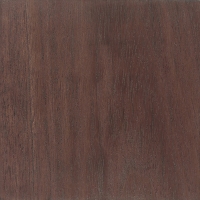 |
Itin(Prosopis kuntzei) 79.6 lbs/ft3 (1,275 kg/m3)This small South American tree could be considered a super-mesquite. Related to mesquite, it’s very dark, very dense, and very hard; a good substitute for ebony. |
|
|
||
 |
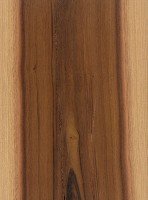 |
Black Ironwood(Krugiodendron ferreum) 84.5 lbs/ft3 (1,355 kg/m3)Pieces are very seldom seen for sale, as this tree is too small to produce commercially viable lumber. Like the unrelated Desert Ironwood, Black Ironwood is an excellent choice for small turning projects. |
|
|
||
Honorable mentions: Camelthorn (74.0 lbs/ft3), Zapote (73.0 lbs/ft3), Brown Ebony (72.3 lbs/ft3), Macassar Ebony (71.8 lbs/ft3), Katalox (71.6 lbs/ft3), Ipe (68.7 lbs/ft3).
Other notes:
- Water weighs 62.3 pounds per cubic foot at room temperature (70 degrees F), so all the woods listed above will readily sink in water.
- Density listings are for woods at a dried weight of 12% moisture content.
- There are probably all sorts of obscure shrubs and small trees that yield wood which can be quite heavy, but they’re just not seen in use by the majority of woodworkers, nor are they reliably documented in woodworking publications.
See also:
Are you an aspiring wood nerd?
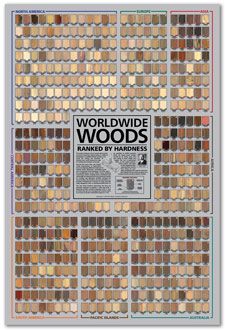




What if I told you that my specialty is one of the Rarest species on the planet (according to scientific research-not opinion) and that I’ve tested just over 1,100 samples for density that all had an MC range of 6-9% and produced an average of just over 69 LB/ft3…with the low (outlier) being 58.76 LB/ft3——and the high being 102.87 LB/ft3……….Then what if I said I’m talking about Pine? Specifically, Pinus elliottii var. densa. Also known to tree/wood experts outside of Florida as South Florida Slash Pine. Down here, it only has one name…Dade County Pine. Also worth considering…if species like… Read more »
Yes
What would be the density of Ironwood, Suriname. It must be up there with lignum vitae and verawood. Will you have any information on this species. Also there is Tubi (queen ebony ) a very heavy and hard wood from Solomon islands.
Yes, this list is out of date. For a more up-to-date list that updates dynamically, you can use the Wood Filter page and sort of density. https://www.wood-database.com/wood-filter/?fwp_sort=weight
About 6 years ago my husband and I went to pick up a used dining table I bought on Marketplace. The lady that sold it to me said it was a “farm” table. It didn’t look like a farm table to me. The top “appears” to be one solid piece. With most farm tables you can see where the pieces of wood are screwed, nailed or glued together. When we went to lift the table to load it onto our truck we both looked at each other like “what the heck is the table made out of. Lead?” My husband… Read more »
I think Eucalyptus microcarpa and E.sideroxylon are both over 1,100-1,300 kg/cubic metre so should be considered for your top 10.
I milled up a log in Coldstream Melbourne Australia
after drying of years it still sinks
some variety of eucalyptus?
many clues as to its specifics.
Robb, there’s no question mark at the end so you are saying you do have clues as to its specifics? Drying for eucalypts can take a decade depending upon the climate and whether it’s under wraps and in the shade. Coldstream can be hot and dry but is it in the open? Ironbark (nth east Vic) is very dense at 1,100 kg/cubic metre but I’ve found Grey Box (E, microcarpa) to be denser than that and possibly the most dense in Australia. I have no idea of its buoyancy but suspect your wood is still green. To help identify wood,… Read more »
Are there any woods denser than water that are native to the US and would be suitable to turn into a walking stick?
Desert ironwood
I love this resource! I am curious though. I just finished looking through the acacia family and Waddywood (acacia peuce) was 89 LBS/FT3. Why is it not even listed in the top ten?(sorry about the text “Yelling” – computer glitch)
It’s because I’m always adding new species and I’ve not yet updated this page to reflect new additions. Also, waddywood is more or less commercially unavailable, and I was trying to put more of a focus on woods that people may have a chance to work with.
I have been given two blocks of very heavy wood with small white dots and open capillary tubes in the end grain.
The heartwood of Vachellia caven (“corazón de espino”) is well known in Chile / Argentina for its extreme hardness and density.
It is used locally for small pieces, tools parts, it’s not comercial timber due to its small size and growth (but it has been overexploited to make vegetal charcoal). Difficult to work, it has no oil so gluing is easy. And obviously, it sinks in water (the mechanical characteristics are very similar to veralignum, pauferro and others)
.
Can anyone identify this hardwood , these African or Egyptian head sculpture hardwood carvings weigh 5 pounds each and stand 49 centimetres(19 inches) in height. Seem very dense heavy wood .
I’d like to know the species of wood ?
If you go through the exercise of measuring (approximating) the volume of each piece in cubic feet, you can then calculate density of the wood by using the exact measured weight divided by that volume. Because these pieces are irregular in shape (i.e., not a perfect cube), the volume can be obtained by placing the object in a bucket of water to measure the amount of water volume displaced in a circular bucket (measure volume of water height before immersion, then measure water volume height after immersion). The difference in height is what you would need to calculate volume of… Read more »
If I was to take some pictures of wood I cannot identify, would someone be able to definitively name it? I work at a lumberyard and I have gotten varying answers like ironwood, wenge, jatoba, cocobola, etc. Please let me know.
A lot will depend on the quality of the pictures and how well the wood (especially the endgrain) has been prepared to seen the details.
Hello Gentelmen, Surely it is a gentelmen club with a firm knowlege and interest in wood /woods. I have learn a lot myself by a fluke just as I was looking for a hard woods in my area of southern Ontario, Canada. I need to find a wood for my wool spindle, specific to a Dealgan spindle.Next step to find a lathe and an operator-man preferably. Thank you all for a load of valuable information on wood. Now I need to learm more of a core gravity od a wood that will produce steady whorl. My question to you Eric,… Read more »
Hi, great list was really helpful.
I have been searching for an answer for my beautiful Hardwood coffee table. It was made near Acapulco, Mexico in the “60’s. We were told it was carved from a tree root. It’s extremely heavy with light and dark wood, three legs and we loved it enough to have it shipped to PA. I am passing it on to my Grandson who has everything he wants except this piece. I was told it was “Bocato” or Bacato wood, but cannot find that name in any reference. Of course, I did not ask for spelling and wonder if there is a… Read more »
Possibly Bocote? https://www.wood-database.com/bocote/ I’m not familiar with vernacular names used in Mexico, so that’s just an educated guess.
Lignum Vitey if you can afford it/find it. It is very heavy, provides the most beautiful grain you will ever see. The variation in the Bahamas (Protected) but can be taken as reclaimed wood is a nice choice. The wood is full of natural oils. It’s a little hard to work with but once you have a flat surface, you can then sand the surface to a very high polish that never needs waxing. They used to make ball bearings with it back in the horse and buggy days when steel/iron was not available. Expect the top to last forever… Read more »
Lignum vitae has so much natural oil in it and is so hard that they use it for ball bearings on nuclear submarines. Why? Because the subs are only refueled every three years, and regular ball bearings would wear out but the lignum vitae is hard enough to last, being self oiling. My brother-in-law worked on nuclear subs and was a hobby wood worker. However, lignum vitae is endangered and VERY expensive, and the good stuff is very , very hard to find.
It’s not used as a ball bearing, it’s used on the main shaft as the stern tube seal and requires a constant (though low rate) of water to help maintain both the seal and lubrication.
this wood is very heavy but light in culour similar to light oak but much heavier and stronger it grows in indiia and similare countries expensive.
i cannot think of the name anyone got any sugestions would be gratefull for any ideas.
Shorea robusta or “Sal” might possibly be what you’re thinking of. It’s mostly used for building structural timbers and used to be used for railway ties because of its strength and resistance to decay and insect attack. It checks significantly, but can be used in woodwork in small pieces.
“Imli” or Tamarind Wood is probably too dark to be what you’re thinking of – it’s very strong and shock resistant and is used for axe and other tool handles, or fine turning.
Not sure either of the above is what you’re describing though.
Satinwood, perhaps?
I see different weights given to a gallon of water.
Old phrase… a pint is a pound the world around.
8 pints in a gallon (4 quarts) weighs 8 pounds. it does not matter the distribution..square, round or whatever… a gallon or water weighs 8 pounds.
A gallon of water is 3.786 liters or 3785.41 milliliters to me more exact. 1 mL of water at 4 degrees Celsius or 39.4 degrees F, it’s most dense temperature, is exactly 1.0 gram. Therefore a gallon of water at standard temperature is 3785.41 grams divided by 453.59 grams per pound which is 8.345 pounds per gallon. Your 8 pounds per gallon is off by 4.3%, not an insignificant amount.
Completely incorrect. Pint = pound is actually a definition in the English system, and does not need or allow for recalculation.
Unfortunately you are mistaken Murray. While pint = pound may once have been part of the imperial system. The ENTIRE imperial system is now based upon values of the metric system.
Water is not at 39.4°F in most places during most of the year. What is it’s weight at its least dense temp and again at 70°F ?
what about this piece of wood only found in the Solomon islands and may other parts of the world but it considered to be the hardest wood on earth”Xanthostemon melanoxylon”- species.
Hi, I was looking for info on Italian stone pine and couldn’t find it, maybe goes under a different name?
Thanks
I don’t have any samples of this wood. For more precise reference, the tree’s botanical name is Pinus pinea. I don’t have any info on the wood from these trees.
It says elsewhere that Black Ironwood (African Ironwood) is called Olea capensis and, according to the Guinness Book of Records, is the heaviest wood, with a specific gravity of 1.49 (whatever that means).
I have two elephants from South Africa – they do not float.
*The ‘Specific Gravity’ of water is the reference point and is 1 (1000kg/m³). So, everything over 1 should sink and must mean the Olea capensis version of Black Ironwood is 1490kg/m³, much heavier than the Krugiodendron ferreum species of ‘black ironwood’ listed at #1?
This is, generally speaking, false. I highly recommend checking out my video explaining why this is. (I even deal specifically with Olea capensis and the Guinness world record claim.) https://www.youtube.com/watch?v=IfXW9Tw-3O0
Left out petrified wood.
That’s not wood. Petrified wood is wood fibers that are replaced with minerals.
Mr Meier, I’m not a wood boffin, but just loved your article here…so anytime you find yourself near Pilanesberg National Park in South Africa, you have a bed – save travelinafrica@gmail.com somewhere:)
I was actually cruising Google to find the properties of German Esche that turned out to be an Ash Tree, and stumbled onto this article. Germany has some real crappy firewood, but Esche and Buche (Beech) seems to be the only real contenders burning longer and not giving you a headache. Thank you again, awesome article !
You claim that a cubic foot of water weighs 62 pounds. It’s more like 7 or 8. Try it, pick up a gallon jug of water and say to yourself, “this gallon jug looks like it’s approximately a cubic foot and weighs about 7 or 8 pounds”. Now if we had 9 of these jugs and made a cubic yard out of them, then sure, 62 pounds would be about right.
I don’t know much about your antiquated jugs and gallons but I do know that a foot is approximately 0.3 metres, and a kilogram is approximately 2.2 pounds. A cubic foot is a cube with side lengths of one foot, i.e. approximately 0.3 m, which gives a metric volume of approximately 0.027 cubic metres (0.3 x 0.3 x 0.3). The density of water is in the order of 1,000 kg/m^3, so a cubic foot of water weighs approximately 27 kg or 59.4 lbs using these rough approximations and conversions. Therefore, 62 lb sounds entirely plausible as the weight of a… Read more »
One gallon of water weighs 8.3453 pounds. One cubic foot of water contains 7.48052 gallons. The weight of one cubic foot of water is 7.48052 gallons times 8.3453 pounds, which equals62.42718356 pounds of water per cubic foot.
Water density is 62.4 lbs per cubic foot. Any engineering handbook will verify this number.
The only explanation that I can think of would be that the wood is not dry yet. I’ve never heard of any softwood, when fully dry to 12% moisture content, that would sink in water.
Do you have any pictures of the wood, especially of the endgrain?
Number three, wrong one.
https://www.youtube.com/watch?v=CI39sMIy6mE
this video shows Tom from ‘Ask this old house’ demonstrate Lignum Vitae sinking in water.
Seberian larix larix seberica
Anybody know what the least expensive most readily available heaviest wood for the US would be?
You’d probably want to look at flooring species for the combination of cheap and heavy. I’m thinking something like Jatoba or Cumaru might fit the bill, depending on your requirements. Otherwise, when it comes to domestic lumbers, it’s hard to beat the cost/hardness ratio of Beech. Oak is another contender.
Thanks for the reply! Helpful!
Probably depends on the application, the size and shape of the piece you want, and possibly other aspects. Good quality axe handles in USA are usually hickory, which is native to USA. As well as its hardness/density, its other mechanical properties (flexibility and vibration damping) are particularly compatible with use for percussion (striking) tool handles. It is not as heavy as the South American timber mentioned, but should be less expensive and very readily available.
In my > 5500 species wood collection I have a wood sample of Acacia peuce with a volume weight of 1,43. It is originallly supplied to me by the late Arthur Green of Louisiana.
Any chance you might have any samples for sale or trade? Here’s my trade list: https://www.wood-database.com/wood-trading/
Dear Sir, I see you message only now. I have a large inventory of wood samples for sale and for trade. Please reply to HLBakker@12move.nl
what about olive wood? is it out outside of the rank by chance? here in the middle east we know it’s a wood that doesn’t float and don’t soak water. I’m curious to know where it will rank. thanks
How to grow a forest of your own by getting hold of theses seeds of wood exotics, any body can guide, through some collectors not commercial links of sites…please
So you want seeds but don’t want to pay for them? The cost of the seeds would be quite low compared to the freight charges, particularly if you get them from several different suppliers. My recommendation is to contact a commercial seed merchant. Most will sell small quantities, and you can expect the seeds to be viable. As for your forest, you will need a suitable climate and soil, and then a LOT of time. These dense, hard woods are usually very slow growing, and harvested trees are often hundreds of years old.
I don’t know about other regions, but many Australian trees also have seeds that require special treatment to induce germination, having evolved so that the seeds only germinate after a bushfire has eliminated competing plants such as grasses. They don’t all use the same indicators of fire, so knowledge of each species is required. Some require heat, some require a chemical that can be applied via “smoke water”, and some require the seed to be scarified. A seed merchant could advise what preparation is required to maximise the likelihood of successful cultivation of each species they sell.
I have been searching over net since 5 months for: Bobinga, Peltogyne, Bocote, Zircote, Ebony, Dalbergia Nigra, Retusa and even the big seed companies like chiternseeds or b n t do not have them, so I thought some collector may help out, iam not looking for them for free and if any of them are in Zone 9-11 its fine for me. If it takes 50 plus years: may be something which you may be remembered after…! need solution though.
It’s probably best to search using the scientific names. If the professionals can’t get them, you are going to have problems finding them. I would contact the ones that list the trees but show that they are out of stock, and ask them if they expect more stock in the future. That’s when you’ll find out where the seeds come from and how. It may simply be a seasonal product. The species that you mentioned are wild harvested trees of tropical Africa and South America, which aren’t cultivated commercially and are rare in nature. If you NEED a solution, you… Read more »
Hello mansoor do you know the wood called “tectconia grandis” is one of the hard and beat wood for funiture ,I have as much as you want in timbers in africa if you are intrested contact me thanks
Dear Mansoor, Your post is a bit ambiguous, is it seeds or cuttings that you’re seeking, hoping to grow the above species? Or are you looking for wood samples? If the former, I once had a friend who had good luck in similar circumstances with approaching a botanical garden. This was forty years ago in Nepal, of all places, but if you’re still looking, try the Brooklyn Botanical Gardens’ Economic Botany Section for advice and possible seeds or cuttings. When you refer to “Ebony” do you mean Indian ebony, Diospyros melanoxylon? The leaves of these trees, locally called “tendu,” are… Read more »
Australia is home to many dense hardwoods. The Queensland Department of Forestry compiled a list of commercial timbers in a technical bulletin in 1989. I will list a few with densities greater than 1200kg/m3. Lysiphyllum hookerii (Red bauhinia) 1225 Lysiphyllum carronii (White bauhinia) 1390 Eucalyptus orgadophylla (Mountain coolibah) 1230 Diospyros humilis (Queensland ebony) 1250 Acacia cambagei (Gidyea) 1345 Eucalyptus whitei (White’s ironbark) 1235 Eucalyptus shirleyi (Shirley’s ironbark) 1235 Erythropleum chlorostachys (Cooktown ironwood) 1220 Archidendropsis basaltica (Dead finish) 1200 Acacia aneura (Mulga) 1200 Acacia peuce (Waddywood) 1425 Acacia rhodoxylon (Rosewood) 1280 Acacia omalophylla (Yarran) 1235 Bear in mind that these are… Read more »
What about IPE?
Ipe doesn’t crack the top ten list, but (for now) you can see it at the tail end of the honorable mentions at the end of the article.
I have seen Acacia peuce (waddywood) from central Australia listed as between 1.35 and 1.4 in density from various credible sources over recent years and from my own past measurements. It has a very dark purple heartwood. It ‘s not a commercial wood but occassionally available.
I believe a number of Australian desert woods would challenge many, if not most, dense woods described here, in density (many over 1200 kg/ m3)
Send me some samples and I’ll gladly add them to the site.
As a IWCS wood (reference specimen) supplier I send many wood reference specimens around the world, to collectors and universities, for study. Some of the densest Australian woods have been the heartwoods of Alectryon oleifolius and Acacia peuce. There are others. A Qld Forestry Publication lists many Australian species with air dry densities over 1200 kg /m3. I wood recommend that to you if its still available. Dont have the name of it just now. Maybe later. Here is an interesting publication by the same author
https://www.agforests.com.au/uploads/Utilisation%20of%20Western%20Queensland%20Hardwoods%20as%20Speciality%20Timbers.pdf
Here is a working link to the document that Eugene describes: https://rirdc.infoservices.com.au/downloads/04-132.pdf
Section 3 covers the mechanical properties, and describes the methodology of the sampling and testing. Table 3.1 on Page 23 (Page 43/242 in the pdf) shows average air dry (which it defines as 12% moisture content, tested in accordance with AS/NZS 1080.1 (1997)) densities, and lists that of Gidgee (Acacia cambagei) as 1,283 kg/m^3.
In case anyone was reading this and trying to get the pdf. Working link: https://www.agrifutures.com.au/wp-content/uploads/publications/04-132.pdf
Hey Eric, I like the countdown to the heaviest wood. Good format. You might consider indicating specific gravity of those woods in your “heaviest woods” category because whether they float or not is an interesting topic of converstion. I’ve seen charts of relative specific gravities of wood- begging the question of whether they’d float. Some woods don’t float. Sorry Natalie that was a joke in very poor taste. Honestly it wasn’t a joke- hence redwood sinkers. Redwood of course has a low dry specific gravity. That’s what happens when a tree drinks too much, it may not float but be… Read more »
Dennis, specific gravity is simply the ratio of the density of a substance to that of a control. Therefor merely divide the density of the wood by the density of fresh water. This is easiest done using the metric system, because fresh water has a density of 1,000kg/m3
SG of Black Ironwood = 1,300/1,000 = SG of 1.3
Thank you. This list and site is exactly what I needed. I’m no master woodworker and this gave me a lot of valuable info for my projects. Thanks a million!
Your list is commendable, however, inaccurate. Zebrawood, Delbergia melanoxylon, is 1280 kg/m3 and not on your list.
It’s currently listed as no. 2. In the US, it’s referred to as “African Blackwood.”
Hey Eric, I like the countdown to the heaviest wood. Good format. You might consider indicating specific gravity of those woods in your “heaviest woods” category because whether they float or not is an interesting topic of converstion. I’ve seen charts of relative specific gravities of wood- begging the question of whether they’d float. Some woods don’t float. Sorry Natalie that was a joke in very poor taste. Honestly it wasn’t a joke- hence redwood sinkers. Redwood of course has a low dry specific gravity. That’s what happens when a tree drinks too much, it may not float but be… Read more »